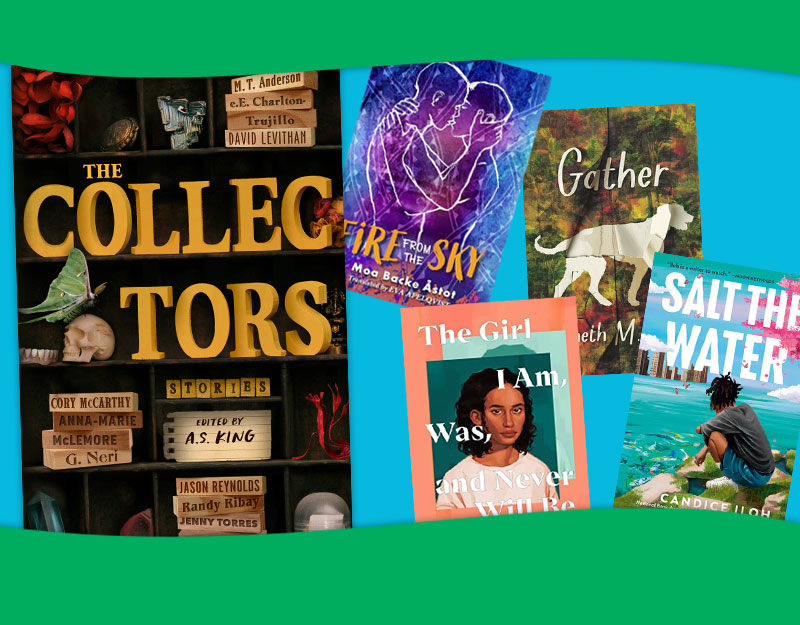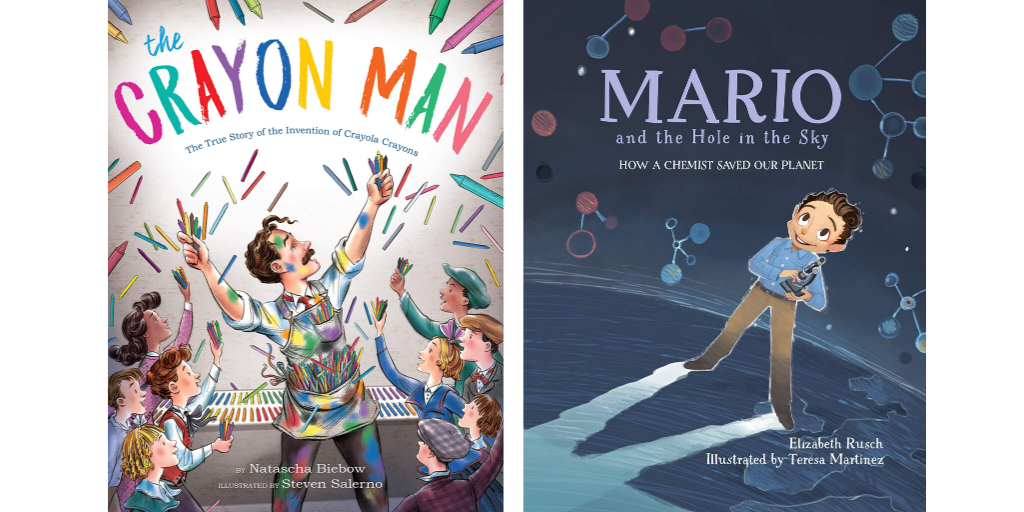Review of the Day: Nurse, Soldier, Spy by Marissa Moss
 Nurse, Soldier, Spy: The Story of Sarah Edmonds, a Civil War Hero
Nurse, Soldier, Spy: The Story of Sarah Edmonds, a Civil War Hero
By Marissa Moss
Illustrated by John Hendrix
Abrams Books for Young Readers
$18.95
ISBN: 978-0-8109-9735-6
Ages 6-12
On shelves now.
If I want to depress myself on a given day I’ll compare the list of biographical subjects that kids in school are handed to pick and choose from with the biographical subjects that I had to pick and choose from when I was a kid some twenty odd years ago. It’s disheartening. Essentially, it’s the same list. Teachers always include Edison, Einstein, Washington, Tubman, Keller, etc. Once in a while someone will fall out of favor (Benjamin Banneker) to be replaced with someone new (Matthew Henson) but that’s just the way of things. How I long for the day when the core biographical subjects are thrown out the window and kids can take full advantage of the range of amazing stories in their libraries’ biography sections. That’ll be the day when a kid has an assignment to find a historical female hero who fought in a war and I can hand them Nurse, Soldier, Spy: The Story of Sarah Edmonds, a Civil War Hero. Until then, I’ll just have to hawk the book on its own merits. Fortunately, this is not too terribly difficult to do.
ADVERTISEMENT
ADVERTISEMENT
I’m sure you’ve all heard stories of those women who cut their hair, donned men’s clothes, and joined the armed forces during the Civil War. Many a woman did this, but few were as brave and inventive as Sarah Edmonds. Having run away from home at the age of sixteen to escape an arranged marriage, Sarah had been living as a man for three years when she returned to Michigan to join the Union cause. On the field she proved a brave nurse, soldier, and eventual spy. When told to spy on the enemy, Sarah became a believable black male slave and managed to extract some much needed information across enemy lines. An Author’s Note at the end explains how the rest of Sarah’s life went and how she became “the only woman invited to join the Grand Army of the Republic (GAR), the association for Civil War veterans of the Union Army.”
 Marissa Moss is best known for her Amelia’s Notebook series, an early chapter book grouping of titles that served as the precursor to the current Diary of a Wimpy Kid journal boom we’re now in. I was under the distinct impression that fiction was Ms. Moss’s one and only bag, and this feeling was helped in no small part by the biographical sketch of her that appears on this title’s bookflap. Dig a little deeper, however, and you see that Ms. Moss has a longstanding appreciation of history that has manifested itself in a variety of different ways over the years. Penning everything from historical novels like Galen: My Life in Imperial Rome to a journal series of different young American girls to other picture book biographies of too little lauded souls like Ida Lewis, Maggie Gee, Jackie Mitchell, and Harriet Quimby, it’s clear that Sarah Edmonds is just the latest in Moss’s series of discoveries.
Marissa Moss is best known for her Amelia’s Notebook series, an early chapter book grouping of titles that served as the precursor to the current Diary of a Wimpy Kid journal boom we’re now in. I was under the distinct impression that fiction was Ms. Moss’s one and only bag, and this feeling was helped in no small part by the biographical sketch of her that appears on this title’s bookflap. Dig a little deeper, however, and you see that Ms. Moss has a longstanding appreciation of history that has manifested itself in a variety of different ways over the years. Penning everything from historical novels like Galen: My Life in Imperial Rome to a journal series of different young American girls to other picture book biographies of too little lauded souls like Ida Lewis, Maggie Gee, Jackie Mitchell, and Harriet Quimby, it’s clear that Sarah Edmonds is just the latest in Moss’s series of discoveries.
As any author of picture book biographies knows, you have decide right from the start how much of your subject you’re willing to reveal. Do you want to encompass a person’s entire life from birth to death or would you rather take a slice of their life and blow it up as representative of who they really were? Both techniques have their advantages and disadvantages, but in the case of Ms. Edmonds, Moss took the road less traveled. Though Edmonds had a hugely exciting life that ended with her burial in a cemetery reserved for Civil War veterans (the only woman to have that honor) Moss pinpoints the moment in the woman’s life that contains the greatest dramatic flair. So it is that we see Edmonds enlist, fight, rescue, spy, and save the day in the end. Along the way she uses sources like Edmonds’ own diary to allow her to say what Sarah feels or thinks at one moment or another. I’ve a real pet peeve of children’s biographies that just assume that they know what their subjects were thinking from one moment to the next. However, if you’ve that person’s diary in hand then you’re clearly not making up those emotions. You’re merely quoting what they say they felt.
 I’ve seen a lot of picture book biographies of too little known heroes in my day, but I’m fairly certain that this title marks the first time I’ve ever seen a Bibliography equally split between the author’s sources and the illustrator’s. In fact, the endmatter of Nurse, Soldier, Spy is remarkable in and of itself. Between the Author’s Note, the Artist’s Note, the Glossary, the two Bibliographies, photographs of the real Sarah Edmonds, and the Index, it seems petulant to ask for more. Still, I was a little surprised not to see a rudimentary Timeline anywhere in the front or back. School assignments where kids have to select their subjects and write about them usually ask that the kids refer to the Timelines of their subjects. Not having one in this book may, unfortunately, limit its school use, which is a crying shame because unless a kid knows to check the tiny type on the publication page, there’s no other way for them to figure out facts like the one stating that Sarah Edmonds was born in 1841.
I’ve seen a lot of picture book biographies of too little known heroes in my day, but I’m fairly certain that this title marks the first time I’ve ever seen a Bibliography equally split between the author’s sources and the illustrator’s. In fact, the endmatter of Nurse, Soldier, Spy is remarkable in and of itself. Between the Author’s Note, the Artist’s Note, the Glossary, the two Bibliographies, photographs of the real Sarah Edmonds, and the Index, it seems petulant to ask for more. Still, I was a little surprised not to see a rudimentary Timeline anywhere in the front or back. School assignments where kids have to select their subjects and write about them usually ask that the kids refer to the Timelines of their subjects. Not having one in this book may, unfortunately, limit its school use, which is a crying shame because unless a kid knows to check the tiny type on the publication page, there’s no other way for them to figure out facts like the one stating that Sarah Edmonds was born in 1841.
 John Hendrix is the kind of illustrator you don’t forget easily. He started out slowly, illustrating books like Abe Lincoln Crosses a Creek then sort of burst full-throttle onto the scene with his infinitely gutsy John Brown: His Fight for Freedom. With this, his third Civil War nonfiction picture book, Hendrix’s challenge was not dissimilar from that of Ms. Moss. He needed to figure out how much to show, in addition to WHAT to show. For Sarah herself he only had a couple photographs to work off of. On top of that, he explains in his Artist’s Note that every detail, from the soldier uniforms to the split-rail log fences had to be accurate to the times. Working with pen and ink and fluid acrylic washes, Hendrix fills his pages not just with images of the action, but also with an eclectic typography that’s worth a second and third glance. Some of Ms. Moss’s words sit lank upon the page, but other times Hendrix takes particular care to make them pop. Not even the lettering was allowed to be out of synch with the times, though. Nope, Hendrix takes his hand-drawn letters from the illustrated letterforms found on broadside posters from that era. So in a sense, Hendrix is utilizing the same method of advertising and promoting of the war effort to advertise and promote Sarah Edmonds herself. I love watching how Hendrix uses these words too. Sometime a person’s sentences will burst out behind them, trailing off the page, as with a confederate soldier who challenges Sarah at the start. Other times they float above in space, drawing attention to
John Hendrix is the kind of illustrator you don’t forget easily. He started out slowly, illustrating books like Abe Lincoln Crosses a Creek then sort of burst full-throttle onto the scene with his infinitely gutsy John Brown: His Fight for Freedom. With this, his third Civil War nonfiction picture book, Hendrix’s challenge was not dissimilar from that of Ms. Moss. He needed to figure out how much to show, in addition to WHAT to show. For Sarah herself he only had a couple photographs to work off of. On top of that, he explains in his Artist’s Note that every detail, from the soldier uniforms to the split-rail log fences had to be accurate to the times. Working with pen and ink and fluid acrylic washes, Hendrix fills his pages not just with images of the action, but also with an eclectic typography that’s worth a second and third glance. Some of Ms. Moss’s words sit lank upon the page, but other times Hendrix takes particular care to make them pop. Not even the lettering was allowed to be out of synch with the times, though. Nope, Hendrix takes his hand-drawn letters from the illustrated letterforms found on broadside posters from that era. So in a sense, Hendrix is utilizing the same method of advertising and promoting of the war effort to advertise and promote Sarah Edmonds herself. I love watching how Hendrix uses these words too. Sometime a person’s sentences will burst out behind them, trailing off the page, as with a confederate soldier who challenges Sarah at the start. Other times they float above in space, drawing attention to  themselves. Whatever the case, they’re eye-popping, imaginative, and necessary.
themselves. Whatever the case, they’re eye-popping, imaginative, and necessary.
The universe likes to present unique children’s books in pairs. That is why you’ll see two picture book biographies of Jane Goodall come out at the same time or two about Althea Gibson. In the case of Ms. Edmonds, hitherto unknown to schoolchildren nationwide, this book by Ms. Moss comes out in tandem with the Carrie Jones title Sarah Emma Edmonds Was a Great Pretender: The True Story of a Civil War Spy. So should you wish to bulk up your knowledge of this fine and outstanding individual, you have multiple options with which to do so. Regardless of what other books exist out there on the subject, however, this Moss/Hendrix title is a must-read and a must-add to any biographical collection. It’s got war. It’s got guts. It’s got heroism. And it’s got a woman that boys and girls alike will find fascinating.
On shelves now.
Source: Final copy sent for review from publisher.
- The New York Times
- A starred review from Publishers Weekly
- The Bulletin of the Center for Children’s Books
- Booklist
Misc:
 Happy Nonfiction Monday! Great Kid Books has the round-up of who’s talking what on the Web.
Happy Nonfiction Monday! Great Kid Books has the round-up of who’s talking what on the Web.
- Read this post from John Hendrix where he shows off the original cover, interior art, and even discusses his next project.
- Go here to read Marissa Moss’s thoughts on finding Sarah Edmonds in the first place.
- The St. Louis Post-Dispatch takes a closer look at the book.
- Images from this book will be on display in the juried annual American Illustration 30.
Filed under: Best Books of 2011, Reviews
About Betsy Bird
Betsy Bird is currently the Collection Development Manager of the Evanston Public Library system and a former Materials Specialist for New York Public Library. She has served on Newbery, written for Horn Book, and has done other lovely little things that she'd love to tell you about but that she's sure you'd find more interesting to hear of in person. Her opinions are her own and do not reflect those of EPL, SLJ, or any of the other acronyms you might be able to name. Follow her on Twitter: @fuseeight.
ADVERTISEMENT
ADVERTISEMENT
SLJ Blog Network
One Star Review, Guess Who? (#211)
Kevin McCloskey on ‘Lefty’ | Review and Drawn Response
Notable NON-Newbery Winners: Waiting for Gold?
The Seven Bills That Will Safeguard the Future of School Librarianship
Take Five: Newbery Picks, Part Two
Gayle Forman Visits The Yarn!
ADVERTISEMENT







